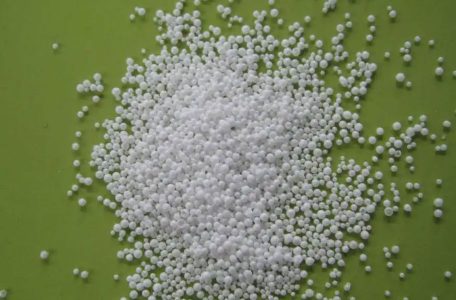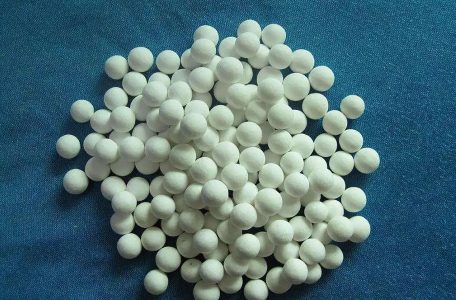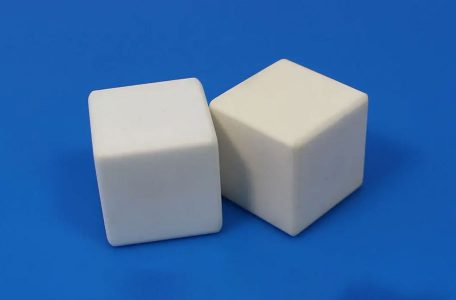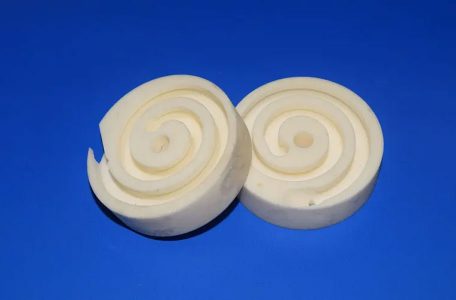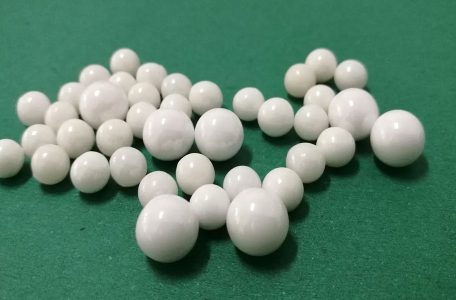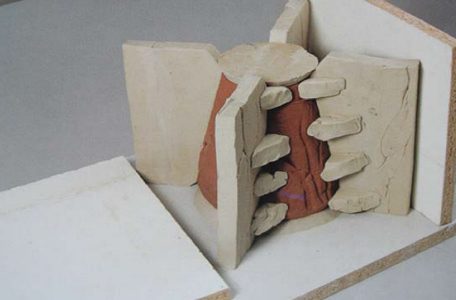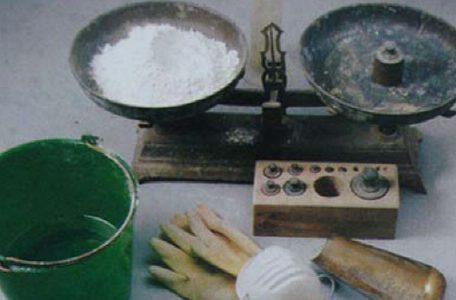99% alumina ceramics and 95% alumina material are the two most commonly used aluminum ceramics. Compared with 95% alumina ceramics, their mechanical properties are stronger and more wear-resistant. 99% alumina has a very high melting point, high hardness and high mechanical strength, and the thermal shock stability is reduced due to the increase in the relative thermal expansion coefficient. 99 alumina is an electrical insulating material with high resistivity. It also has good chemical stability, so its corrosion resistance is good. And alumina ceramics are insoluble in water, only slightly soluble in strong acid and alkaline aqueous solutions. It is usually used in chemical and physical grinding environments, so 99% Read more
Blog
The 99.8% alumina ceramic is made of white alumina powder with a purity of 99.8%. The powder is mixed with a small amount of oxides such as Fe2O3 and Na2O. After alumina material molding and sintering, it becomes a white solid insoluble in water, odorless and tasteless. , High hardness, easy to absorb moisture but not deliquescence (burned does not absorb moisture). The density of 998 alumina ceramics is between 3.8-3.9g/cm3, its melting point is 2050℃, and its high temperature resistance is 1700℃. The compressive strength is 2550Mpa and the dielectric constant is 9.85. Compared with 95 porcelain, 99 porcelain and 995 porcelain, 998 alumina ceramics have stronger insulation properties Read more
95% alumina ceramics is the most widely used type of structural ceramics. Because it has excellent electrical properties at high frequencies, it has low dielectric loss, high volume resistivity, high strength, high hardness, low linear expansion coefficient, and strong wear resistance and heat resistance. And in the same high temperature use environment, 95 porcelain has slightly stronger insulation performance than 99 porcelain, so it is recommended to use 95% alumina ceramics for higher insulation requirements at high temperatures, and its cost is also lower. But the disadvantage is that 95% alumina ceramics are more prone to collapse during processing, so you need to be very careful during processing! In addition, Read more
It is made by the process of cerium oxide stabilization, titration molding, and calcination for phasing. Cerium oxide is used as a stabilizer, which produces high-density zirconia ceramics with a density of 6.2 g/cm3. Due to the material’s good abrasion resistance and high density, it is mainly used for the production of grinding media, especially for grinding highly viscous compounds and paints. The high density also allows for the production of smaller grinding media, greatly increasing grinding efficiency and reducing grinding time. Cerium-stabilized zirconia is similar in wear resistance, fracture toughness and mechanical strength to yttrium-stabilized zirconia material. The microstructure is more delicate and the density is higher, which is Read more
Magnesium oxide partially stabilized zirconia ceramics have high oxygen ion conductivity, high strength and toughness, and good thermal shock resistance, and are extremely promising high-temperature functional materials and structural ceramic materials. Magnesium oxide is used as a stabilizer. This cubic phase material is packed with tiny tetragonal phase precipitates, resulting in very high transformation toughness. Magnesium-stabilized zirconia has high fracture toughness. It has excellent mechanical properties including high strength, fracture toughness, wear resistance, low thermal conductivity and good thermal shock resistance. Due to its resistance to wear and corrosion, it is mostly used in valves, pumps and gaskets, and is also a material in the chemical machining and petrochemical industries. Read more
Yttrium oxide is used as a stabilizer, and this material is mainly tetragonal. It has the highest flexural strength of all zirconia materials, especially when sintered and pressed. Yttrium-stabilized zirconia has a fine grain size and is suitable for use in cutting tools due to its high wear resistance for cutting a very sharp corner. The excellent crystal grains make the produced ceramics dense in density, less pores, excellent mechanical strength, corrosion resistance, impact toughness, thermal shock resistance and extremely low thermal conductivity. Due to these characteristics, yttrium-stabilized zirconia is widely used in semiconductor, petrochemical, photovoltaic new energy and other industries. Zirconia Ceramic Technical Parameters Project Unit Zirconium Oxide density Read more
The use of ceramic molds was adopted in the late Longshan culture, but there is no specific discussion. Until the Shang Dynasty, due to the increasing number of decorative patterns and patterns on the surface of ceramic utensils, pottery impressions and pottery paddles for printing various patterns on the surface of ceramic utensils began to appear. The concept of pottery impression mold was accurately proposed in the middle of the Shang Dynasty. It was originally used as a casting tool for bronze ware. In the Xia Dynasty, ceramic utensils were used as crucibles to smelt bronze. In the late Shang Dynasty, ceramic utensils were used as crucibles. Based on this, Read more
Prepare to weigh a good proportion of water and gypsum, slowly sprinkle the gypsum into the bucket with the relative proportion of water, and pay attention to rubbing your hands during the pouring process to further screen the impurities in the gypsum. It is not advisable to stir the gypsum in the process of spreading it. Slowly sink it into the water until no powdery gypsum can be seen. At this time, stir it by hand or with a mixer to make it blend with the water. While stirring, pay attention to the particles and other particles when mixing. To remove impurities, stir evenly at a frequency so as not Read more
In today’s daily life, the daily utensils and pottery ceramic products we use are formed by hand molding and mold molding. The uniqueness of hand-shaped ceramic products is that mold forming can be used by ceramic workers for repeated use to produce multiple pieces of the same ceramic product. The mold forming process mainly relies on the gypsum solidified in a short time as the mold, and the water absorption of the gypsum is used to absorb the water of the cast or printed mud blank, so that the mud blank is dry and hard to form. Ceramic molds are divided into three categories: Machine press production: male and female Read more
China is a big country with a long history of producing ceramics. From the very beginning, human beings realized in practice that clay mixed with water has a certain plasticity and can shape a certain shape of utensils. Beginning with the ancient and simple molding process, the molding process of ceramics has been With the development of ceramics, it has gradually evolved, from low-level craftsmanship to high-level craftsmanship, such as the early kneading molding or partial molding, and later the development of using clay strips and clay plates to shape and so on. With the continuous updating of modern art forms, creative ideas emerge in an endless stream, but there Read more

Ceramic Machining Industry
- Ceramic Flange
- Ceramic Nozzle
- Ceramic Pin
- Ceramic Plunger
- Ceramic Rod
- Ceramic Shaft/Ceramic Sleeve
- Ceramic Structure Parts
- Ceramic Valve
- Ceramics Cutter
- Electronic Ceramics
- Medical Food Ceramics
- Petrochemical Ceramics
- Photovoltaic Ceramic
- Semiconductor Ceramics
- Microporous Ceramic Suction Cup
- Lithium Battery Ceramic Pump
